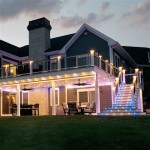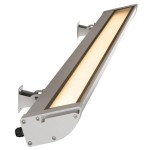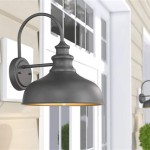Ultra Light Outdoor Gear: A Comprehensive Guide
Ultra light outdoor gear represents a philosophy and practice centered around minimizing the weight carried during outdoor activities such as backpacking, hiking, and camping. The primary goal is to reduce the burden on the individual, allowing for increased speed, distance, and enjoyment of the natural environment. This approach necessitates careful consideration of every item taken on a trip, emphasizing multi-use tools, lightweight materials, and a minimalist mindset.
The shift toward ultra light backpacking is not merely a trend; it reflects a deeper understanding of the connection between physical comfort, environmental responsibility, and the overall outdoor experience. By consciously reducing weight, individuals can decrease their impact on trails, lessen the risk of injuries, and increase their overall mobility and endurance. The selection of ultra light gear requires a thorough assessment of individual needs, environmental conditions, and personal skill levels.
Key Considerations for Choosing Ultra Light Gear
Selecting ultra light gear involves a delicate balance between weight reduction and functionality. Sacrificing essential safety equipment for the sake of shaving ounces can have severe consequences. Therefore, a systematic approach is crucial for ensuring both comfort and security in the backcountry.
Evaluating Needs and Priorities: The first step in selecting ultra light gear is to define the specific needs of the intended trip. Factors such as the duration, terrain, weather conditions, and level of self-sufficiency required must be considered. A weekend trip in temperate weather will necessitate a different gear list compared to a multi-day trek in challenging alpine environments. It is important to critically assess which items are truly essential and which can be left behind. Furthermore, prioritizing comfort and safety over the absolute minimum weight is paramount. For example, a slightly heavier, more durable tent might be preferable to an extremely light one that is prone to damage in strong winds.
Understanding Material Properties: The weight of outdoor gear is largely determined by the materials used in its construction. Ultra light gear often employs advanced fabrics and materials such as Dyneema Composite Fabric (DCF), titanium, and lightweight aluminum alloys. DCF, also known as Cuben Fiber, is exceptionally strong and waterproof while remaining incredibly light. Titanium is used in cooking pots, stoves, and tent stakes due to its high strength-to-weight ratio. Lightweight aluminum alloys are common in tent poles and trekking poles, offering a balance between durability and weight. Understanding the properties of these materials allows for informed decisions when selecting gear. For example, a DCF tent might be the preferred choice for a long-distance hike where weight savings are critical, whereas a more traditional nylon tent might be suitable for shorter trips where durability is a greater concern.
Multi-Use Gear and Minimalism: Adopting a minimalist mindset is fundamental to the ultra light philosophy. This involves identifying items that can serve multiple purposes. For example, a sleeping pad can also be used for cushioning when sitting, and trekking poles can be used to support a tarp shelter. Carrying fewer, more versatile items significantly reduces overall weight. Furthermore, minimizing the number of clothing items is crucial. Layering systems allow for adaptability to changing weather conditions without the need to carry redundant garments. By carefully planning and selecting multi-use gear, individuals can significantly reduce their pack weight without sacrificing essential functionality.
Core Ultra Light Gear Components
Certain items form the foundation of any ultra light backpacking setup. These core components include the shelter, sleeping system, and backpack. Optimizing these items for weight savings can have the most significant impact on overall pack weight.
Shelter Options: The choice of shelter is a critical factor in determining pack weight. Ultra light shelters include tarps, single-wall tents, and hammock systems. Tarps are the lightest option, offering minimal protection from the elements but requiring skill and experience to set up effectively. Single-wall tents provide more complete protection but can be prone to condensation buildup. Hammock systems are suitable for environments with trees and offer a comfortable sleeping platform. When selecting a shelter, consider the expected weather conditions, the availability of suitable campsites, and personal preferences for comfort and protection. The weight of the shelter should be balanced against its ability to provide adequate protection from wind, rain, and insects.
Sleeping System: The sleeping system, consisting of a sleeping bag or quilt and a sleeping pad, is another area where significant weight savings can be achieved. Down-filled sleeping bags and quilts offer the best warmth-to-weight ratio but require careful maintenance to prevent moisture buildup. Synthetic-filled sleeping bags are more resistant to moisture but are typically heavier. Sleeping pads provide insulation from the ground and can be inflatable or foam. Inflatable pads are more comfortable and pack smaller but are susceptible to punctures. Foam pads are more durable but bulkier. The choice of sleeping bag or quilt and sleeping pad should be based on the expected temperature range, the user's sleeping style, and the trade-off between weight, comfort, and durability.
Backpacks: Ultra light backpacks are designed to carry loads efficiently while minimizing weight. These backpacks typically feature minimalist designs, lightweight fabrics, and limited external pockets. The selection of a backpack should be based on the expected load weight and the user's torso length. It is important to choose a backpack that fits properly and distributes weight comfortably. Some ultra light backpacks are frameless, relying on the contents of the pack to provide structure. These backpacks are suitable for experienced backpackers who can pack efficiently. Others have internal frames made of lightweight materials such as carbon fiber or aluminum, offering more support and stability. The capacity of the backpack should be carefully considered to avoid overpacking. A smaller backpack can encourage a more minimalist approach to gear selection.
Essential Considerations Beyond the Big Three
While the shelter, sleeping system, and backpack are crucial, other gear components also contribute significantly to overall weight. These include cooking systems, water filtration, clothing, and safety equipment.
Cooking and Hydration: Ultra light cooking systems typically consist of a small stove, a lightweight pot, and a spork or spoon. Alcohol stoves or canister stoves are popular choices among ultra light backpackers due to their simplicity and low weight. Titanium pots are lightweight and durable. Water filtration is essential for accessing safe drinking water in the backcountry. Water filters or purification tablets can effectively remove bacteria and viruses from water sources. Hydration reservoirs or lightweight water bottles are used to carry water. The choice of cooking system and water filtration method should be based on the availability of fuel and water sources, the user's cooking habits, and the level of convenience desired.
Clothing and Layering: A well-planned clothing system is essential for maintaining comfort and safety in varying weather conditions. Layering allows for adaptability to changing temperatures and activity levels. Base layers made of merino wool or synthetic fabrics wick moisture away from the skin. Mid-layers provide insulation. Outer layers protect against wind and rain. The selection of clothing should be based on the expected weather conditions, the level of activity, and the user's personal preferences. It is important to choose clothing that is lightweight, quick-drying, and packable. Avoiding cotton clothing is crucial, as it retains moisture and can lead to hypothermia in cold conditions.
Safety and Emergency Gear: Safety equipment is non-negotiable, even in ultra light setups. A first-aid kit, a navigation device (such as a map and compass or a GPS), a headlamp, and a signaling device (such as a whistle) are essential items. The first-aid kit should be tailored to the specific needs of the trip and the user's medical skills. The navigation device should be used in conjunction with knowledge of map reading and compass skills. The headlamp should have sufficient battery life for the entire trip. The signaling device can be used to attract attention in case of an emergency. In addition to these basic items, consider carrying a repair kit for essential gear, a fire starter, and a knife or multi-tool. Customizing the safety equipment to the specific risks of the environment is vital.

8 0 Lb Ultralight Backng Gear List 2024 Optimal Setup

The Ultimate Ultralight Backng Gear Checklist Therm A Rest

Ultralight Backng Gear List 9 Pound 2024

Cottage Backng Gear Companies Ultralight Camping

Ultralight Outdoor Gear

Framus 58l Bonfus Ultralight Outdoor Gear

How To Pack Ultralight For The West Highland Way Tgo

Framus 58l Bonfus Ultralight Outdoor Gear

A Simple Ultralight Outdoor Gear List Thrifty Hiker

Floating Cloud 1 3f Ul Gear Ultralight Outdoor Gears







